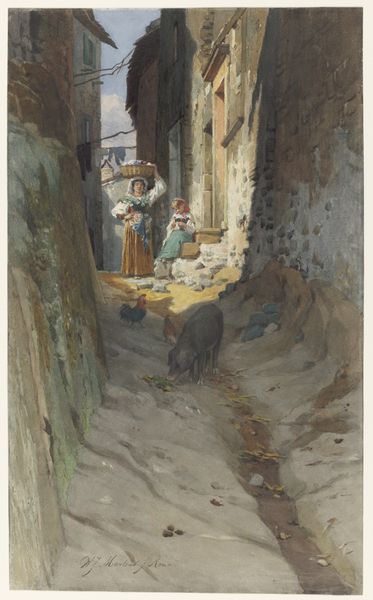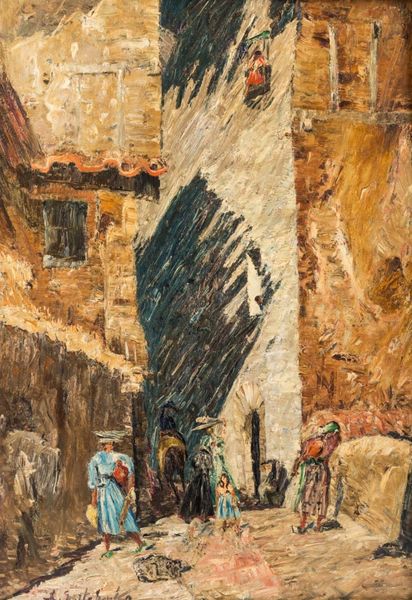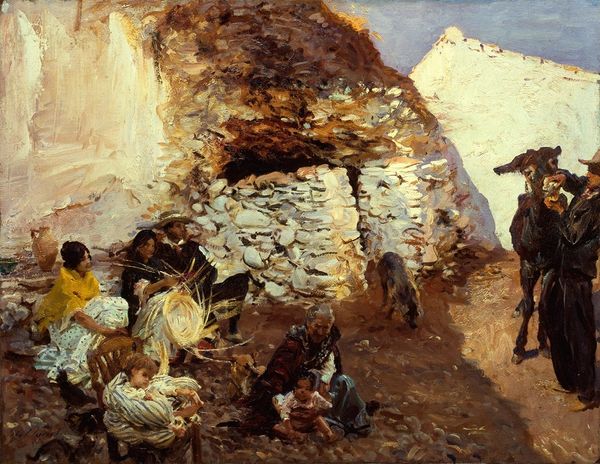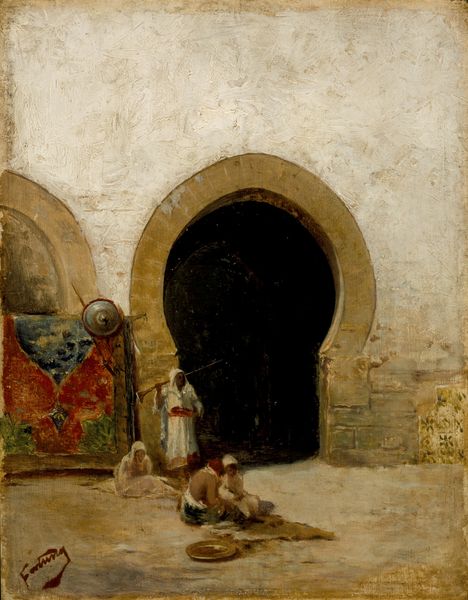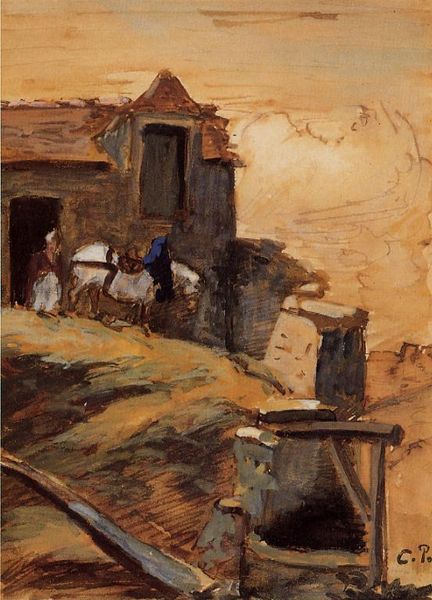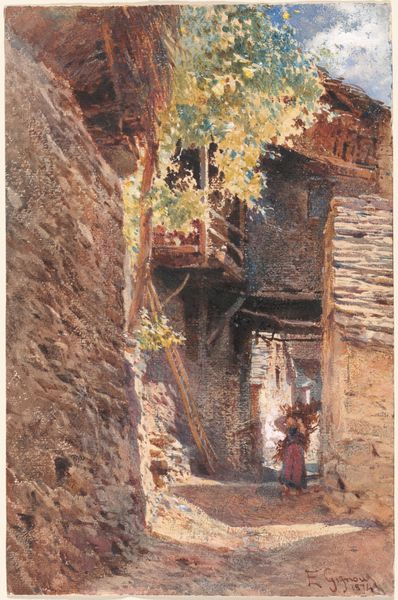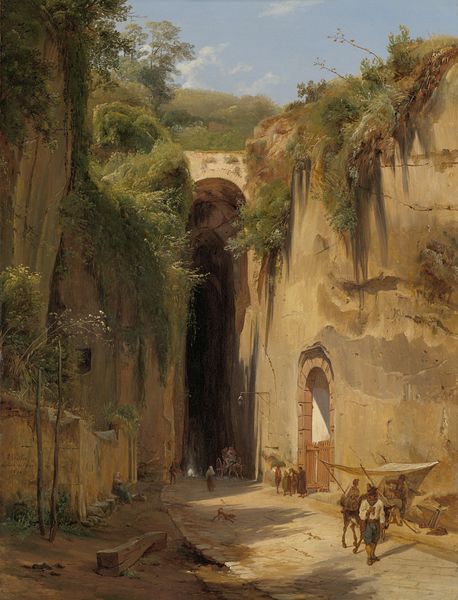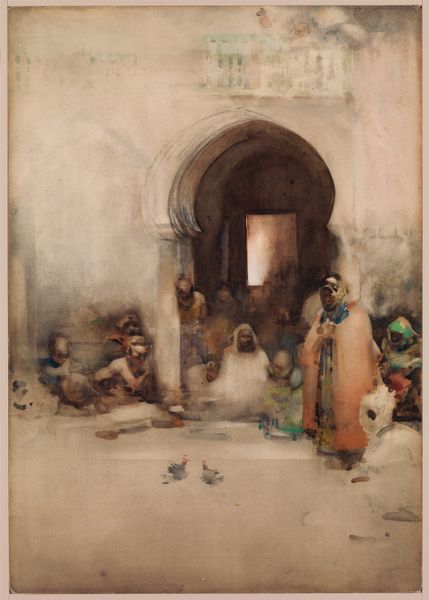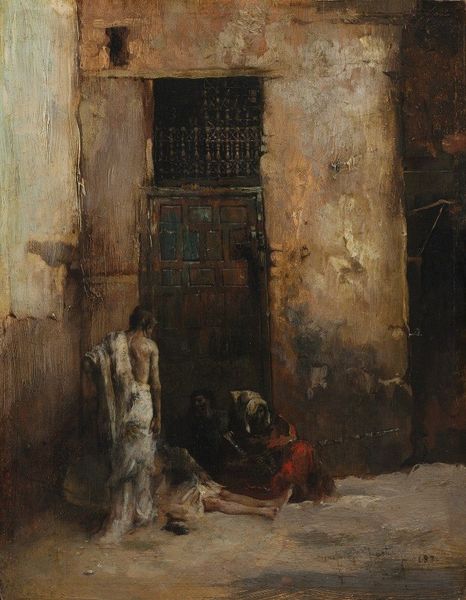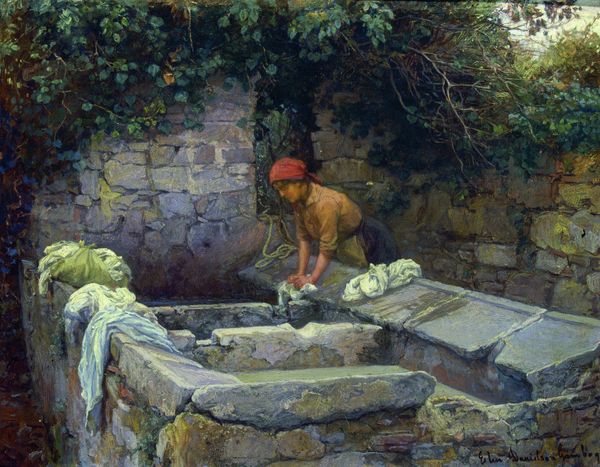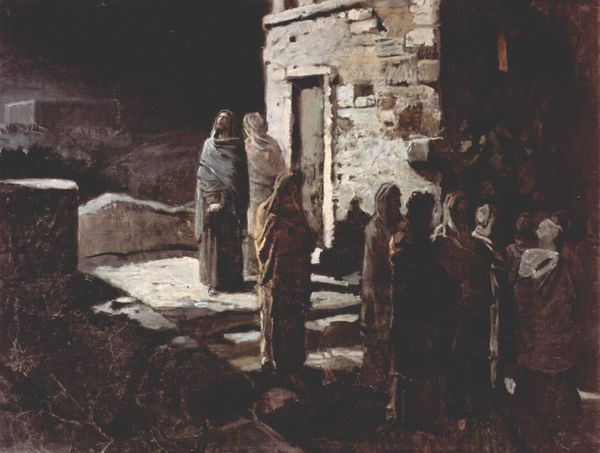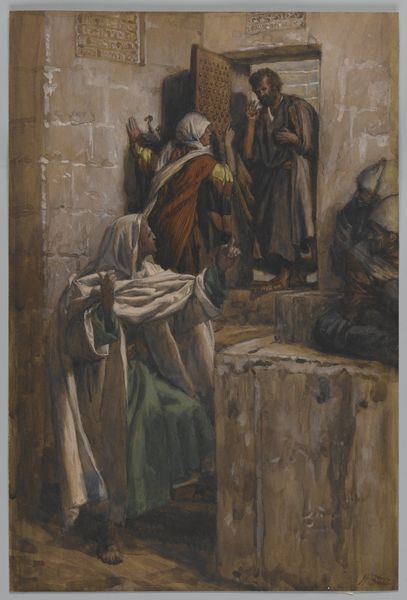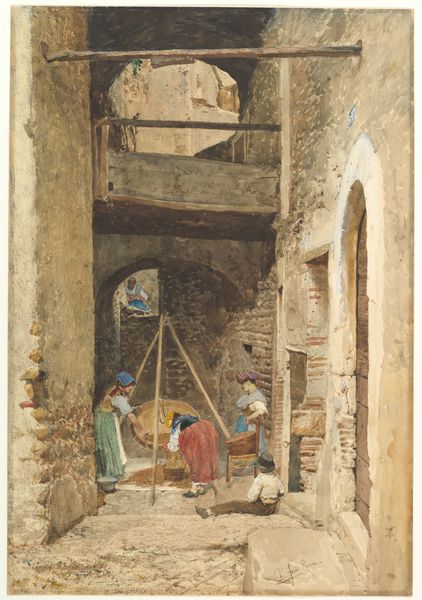
watercolor
#
water colours
#
landscape
#
impressionist landscape
#
watercolor
#
orientalism
#
genre-painting
#
watercolor
#
realism
Dimensions: 45 x 62 cm
Copyright: Public domain
Curator: This watercolor painting, "A Moonlit Street in North Africa," is credited to Eugène Girardet, a French artist known for his Orientalist scenes. Editor: Ah, instantly calming. The soft blues and muted oranges give it this feeling of being wrapped in a quiet secret. What draws me in most is the subdued light—it's almost tangible. Curator: Girardet excelled at capturing the subtleties of light and shadow. Looking at the painting with an activist's lens, it brings to mind the power dynamics inherent in Orientalist art, this desire to portray and often exoticize non-Western cultures. Editor: Yes, there's that familiar tension, isn't there? On one hand, I appreciate the sheer artistry of depicting a specific time and place; the textures of the stone and fabric seem so delicately rendered in watercolor. But, stepping back, I wonder about whose story is truly being told. Do we hear the voices of the figures nestled in that street corner, or just Girardet's interpretation of them? Curator: That tension is exactly what makes studying these works so rich, and complex. Girardet's perspective, undeniably filtered through his own cultural lens, offers insight into the way 19th-century Europeans viewed North Africa. But that very viewpoint simultaneously obscures and reveals aspects of the depicted lives. Editor: You know, thinking about it further, I am struck by the absence of any grand statement. There is just the hum of ordinary life. And perhaps that's the magic—or maybe the deception—that holds the painting together. The invitation into a silent, contemplative moment. Curator: Yes, maybe the painting is asking us less to "see" North Africa, and more to simply be still within it, and interrogate what that act of observing actually means. It forces us to be mindful of our role in the very act of seeing, of interpreting someone else’s existence. Editor: A reminder, then, that our interpretation is a brushstroke too. Perhaps one should not be hasty in settling to facile judgement, particularly with pieces from eras seeped with ideological complexities. Curator: Right—it encourages ongoing conversation rather than conclusions. Thank you, that was enriching.
Comments
No comments
Be the first to comment and join the conversation on the ultimate creative platform.
